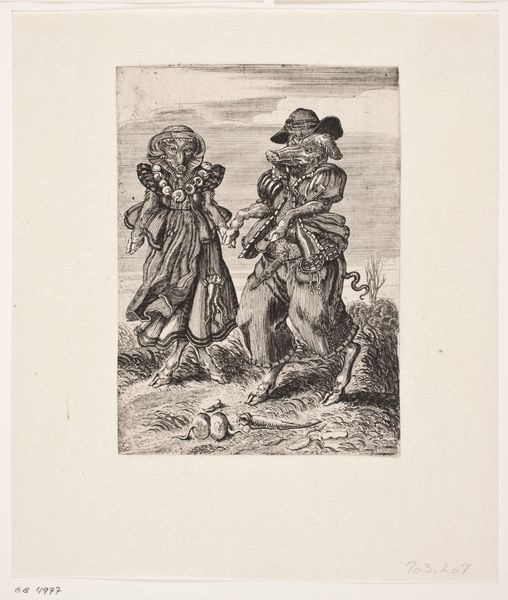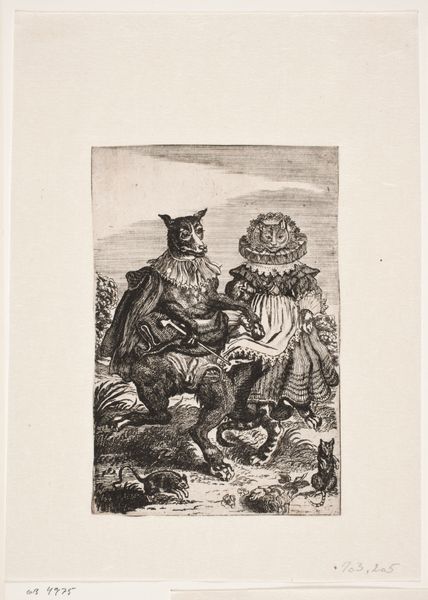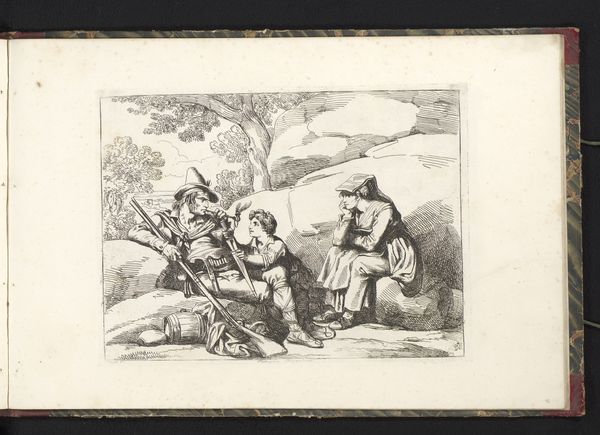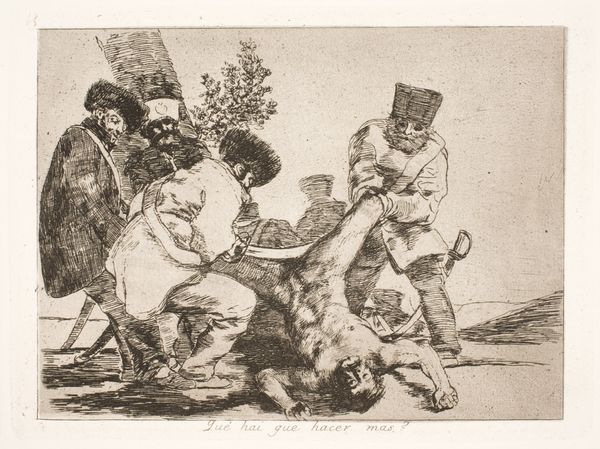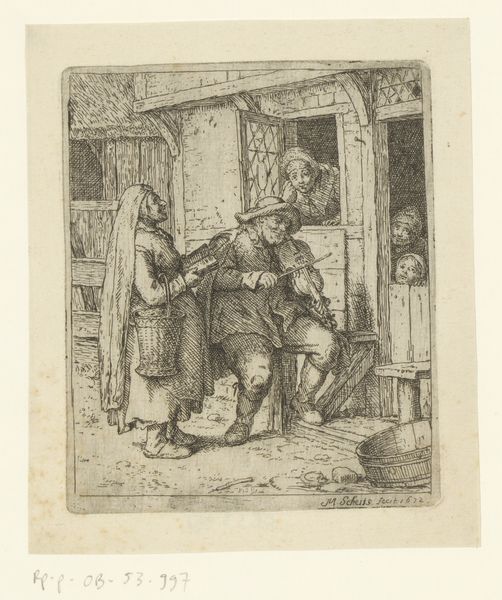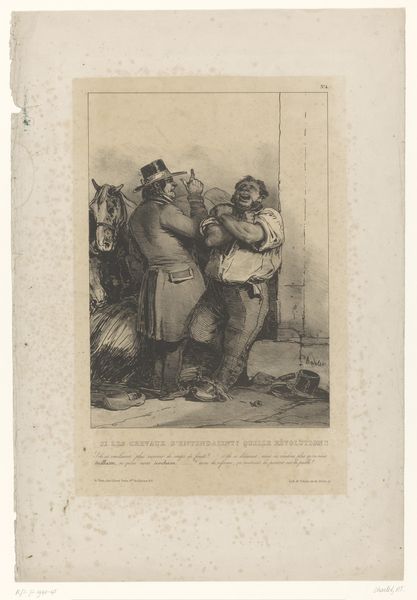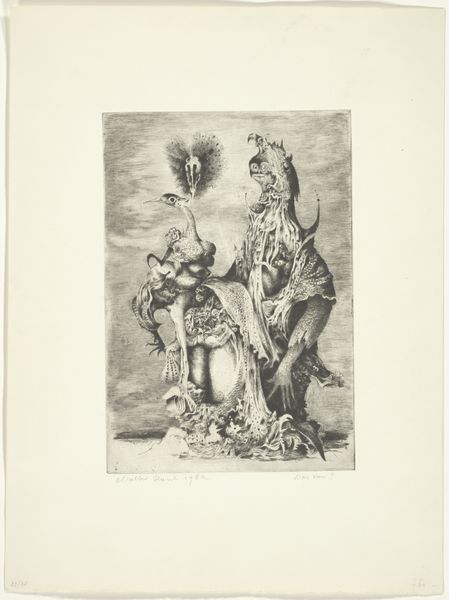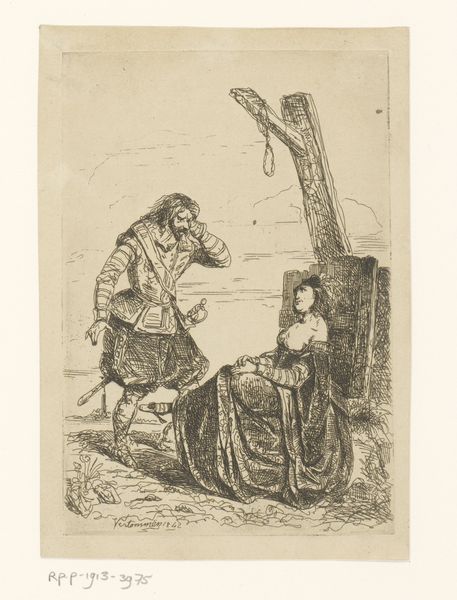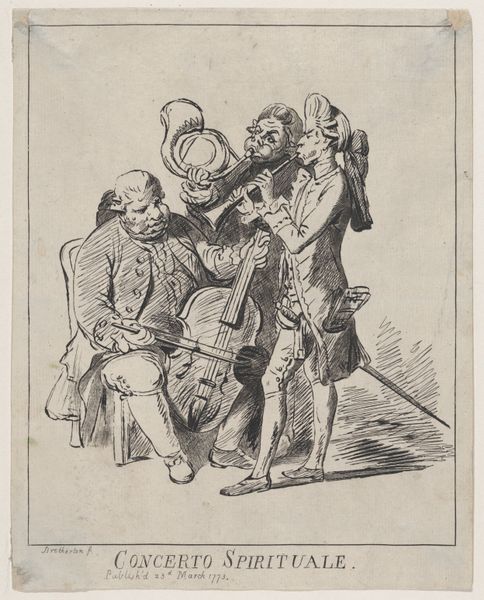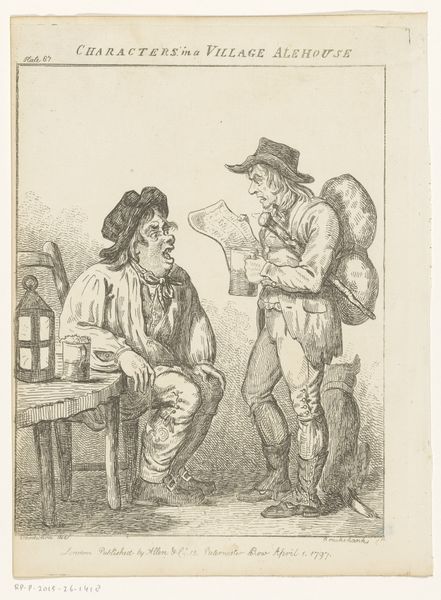
print, etching, engraving
#
ink drawing
#
baroque
# print
#
etching
#
figuration
#
genre-painting
#
engraving
Dimensions: 128 mm (height) x 94 mm (width) (bladmaal)
Christian Rothgiesser created this miniature print, Abepar som danser, using etching, sometime in the first half of the 17th century. The etching process begins with a metal plate, usually copper or zinc. The artist covers the plate with a waxy, acid-resistant ground. Using a needle, the artist scratches away the ground, exposing the metal. The plate is then immersed in acid, which bites into the exposed lines, creating grooves. The longer the plate sits in the acid, the deeper the lines. Once the artist is satisfied, the plate is cleaned, and ink is applied. The ink settles into the etched lines, and the surface is wiped clean. Finally, damp paper is pressed against the plate, transferring the ink to create the print. The labor-intensive process allowed for multiples, and, in this case, the dissemination of a darkly satirical image. It is only by understanding this method of production that we can fully appreciate the work's meaning and historical impact.
Comments
No comments
Be the first to comment and join the conversation on the ultimate creative platform.
